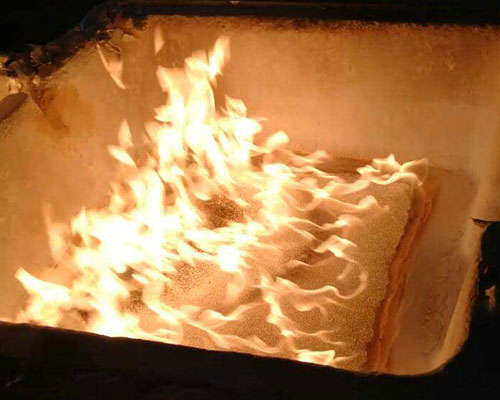The role of ceramic foam filter in casting production, casting defects caused by non-metallic inclusions and other casting defects generally account for 50% to 60% of the total number of waste products. The use of ceramic foam filter technology can effectively reduce or eliminate non-metallic inclusions and purify liquid casting alloys.
The ceramic foam filter uses polyurethane foam as the carrier, immersed it in the coating made of ceramic powder, binder, sintering aid, suspending agent, etc., and then squeezed out the excess coating to make the ceramic coating evenly coated on the carrier The skeleton becomes a green body, and then the green body is dried and fired at a high temperature.
Foam ceramic filters are divided into bonding type and sintering type. The former relies on a binder to bond ceramic fine particles together, and the latter relies on heat preservation at high temperatures to sinter and fuse the pure ceramic fine particles.
The ceramic foam filter has a unique three-dimensional interconnected curved-hole mesh skeleton structure, which makes it have an open porosity of up to 80% to 90%.
Ceramic Foam Filter Purification Mechanisms
Through mechanical interception, rectifying scum, and deep adsorption, three filtration and purification mechanisms can filter out large inclusions and most of the small suspended inclusions in the molten metal, which overcomes the refractory fiber structure internal filter and the straight-hole core ceramic Filters, refractory particles through the plastic mesh, straight hole type ceramic filter, etc. have problems such as low filtration efficiency, low refractoriness and strength, and low molten metal flow rate, which can significantly reduce the casting rejection rate and welding repair rate.

When the ceramic foam filter is used in molten metal casting filtration, the CFF filter in the filter box can intercept large and small particles as surface deposits are formed. When the adsorbed particles reach saturation, that is, when the number of particles adsorbed from the melt is equal to the number of particles carried away by the flowing melt, the slag removal ability decreases. It needs to be replaced with a new ceramic foam filter.
In addition, it can simplify the gating system, improve the metallographic structure, increase the yield and productivity of castings, and improve the internal quality, work performance and machining performance of the castings.

